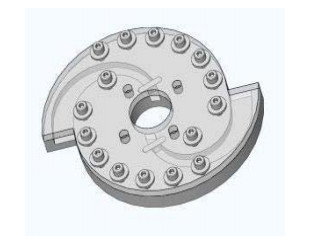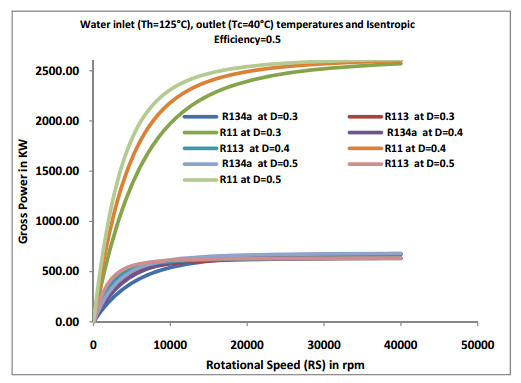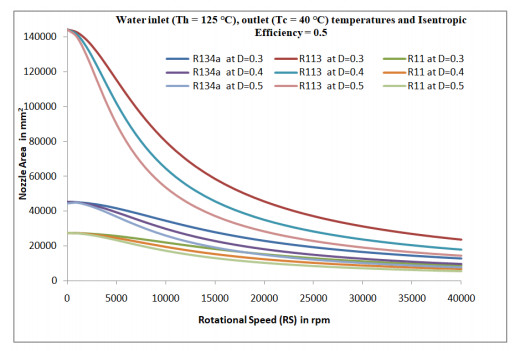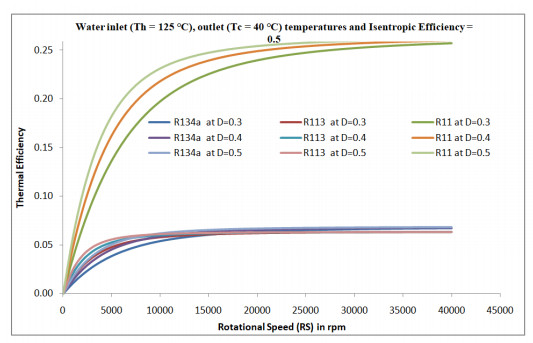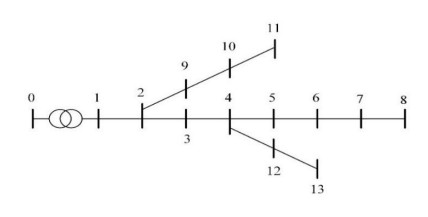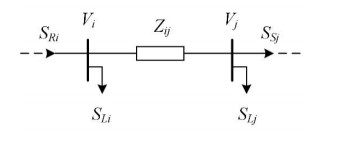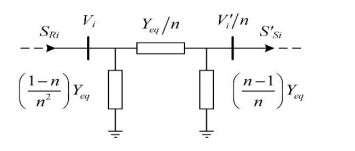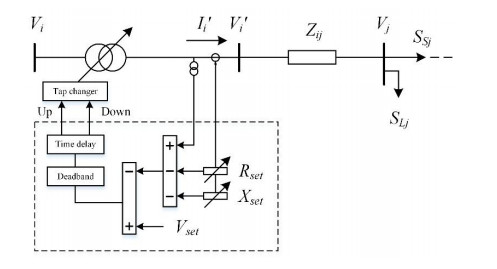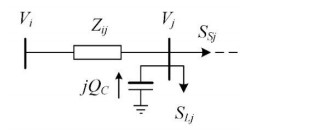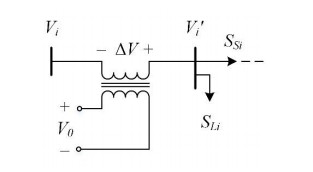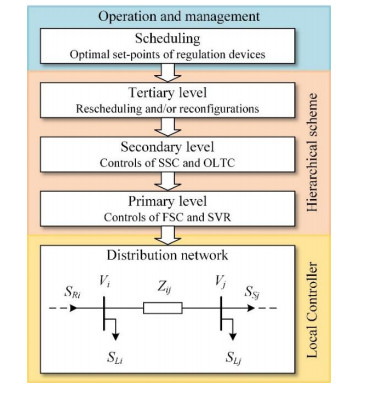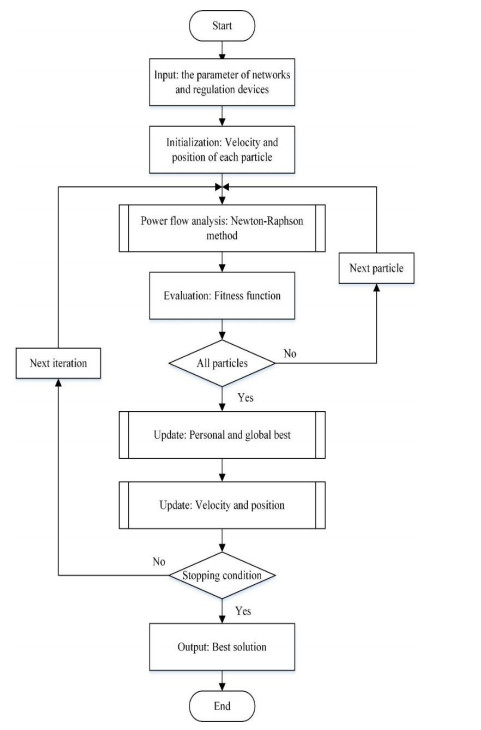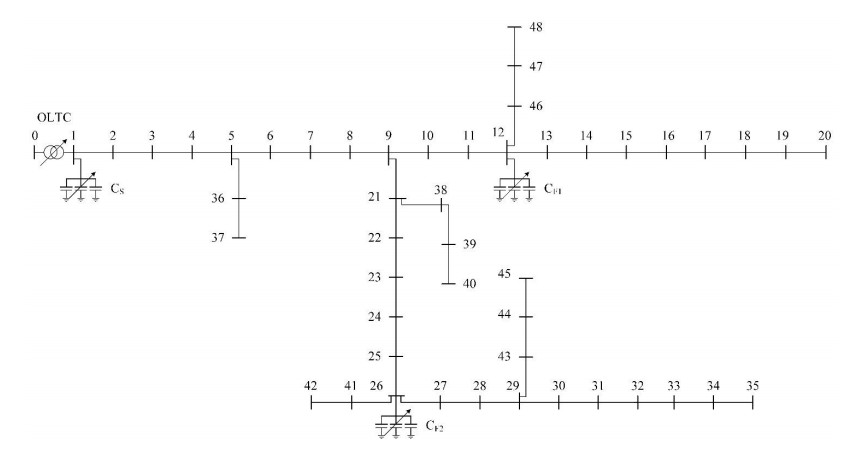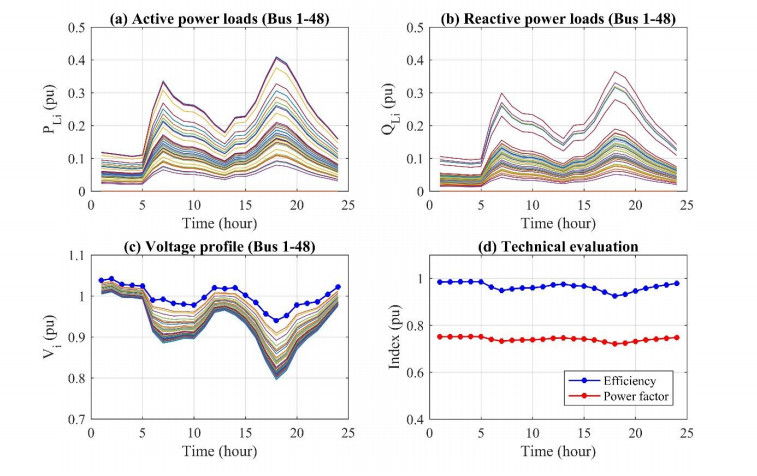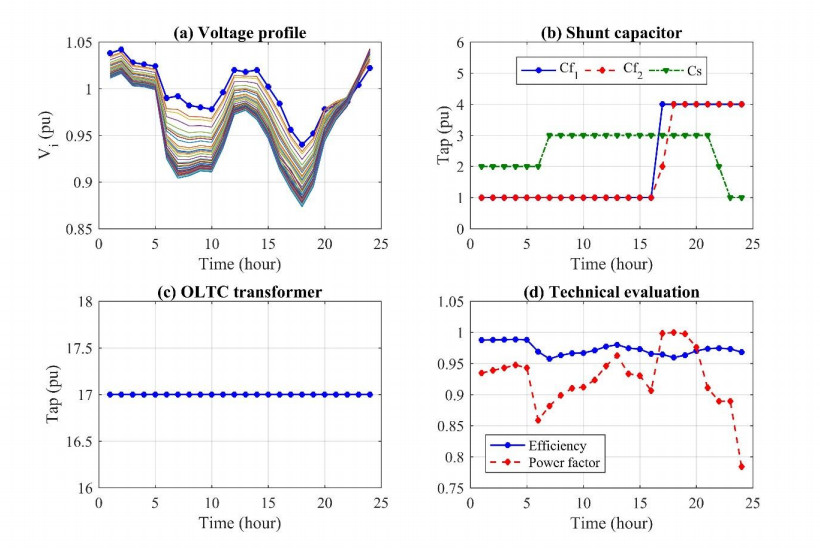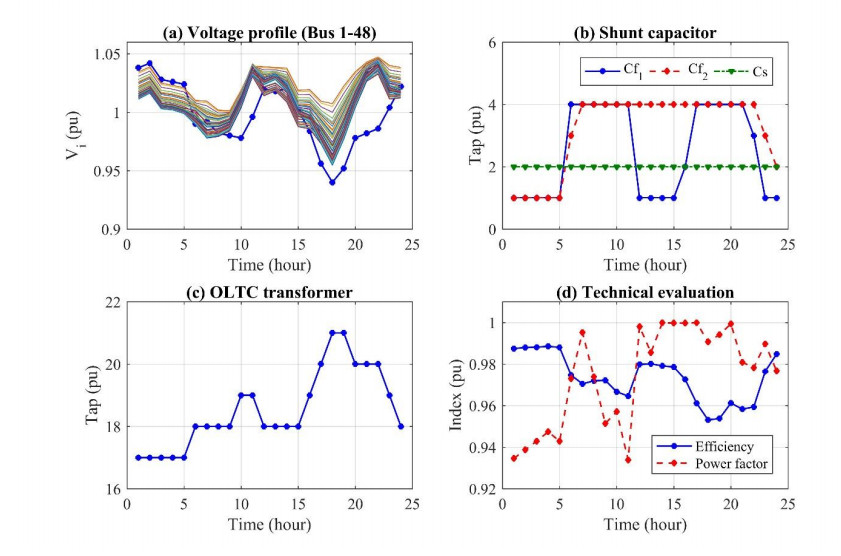This paper presents a new framework to determine the optimal voltage control of distribution systems based on modified particle swarm optimization. The problem is to determine the set-points of the existing regulation devices such as on-load tap changers, shunt capacitors, etc. which minimizes the multi-objective function including power losses, voltage deviations, switching operations while subject to the constraint of allowable voltage levels, switching stresses, line capacity, etc. The problem is formulated and solved by modified particle swarm optimization methods with the trial, test and analysis techniques due to its large-scale and high nonlinearity property. In each iteration, a Newton-Raphson-based simulation is run to evaluate the performance of the regulation devices and the distribution system as well. The convergence is guaranteed by defining neighborhood boundaries for each trial. The proposed method is applied in a practical case study of 15-MVA, 22-kV, 48-bus distribution systems in Vietnam. The result of simulations shows that the voltage profile can be improved significantly with no bus voltage out of the boundaries while the voltage deviations is reduced as much as 56.5% compared to the conventional nominal setting. In the case study, the power loss is not improved much (1.21%).
Abbreviations: A0: Total Nozzle Area; BPPS: Binary Power Production System; h: Specific Enthalpy (kJ/kg); KW: Kilowatt; LGH: Low-Grade Heat; ORC: Organic Rankine Cycle; R11: Trichloro-Fluoro-Methane; R113: Trichloro-Trifluoro-Methane; R601a: Iso-Pentane; RPM: Revolution per Minute; RS: Revolving Speed; RT: Reaction Turbine; TFC: Trilateral Flash Cycle; ηtherm: Thermal Efficiency; ηisentropic: Isentropic Efficiency; WF: Working Fluid; W2: is the Specific weight of Working fluid
1.
Introduction
Energy recovering of immense wealth of low-grade heat (LGH) resources is the hard solutions for developing the renewable and non-polluting energy resources. At present, a binary power production system (BPPS) is the leading effective technology for transforming LGH into electricity typically employed in 'geo-thermal', 'solar' and 'industrial waste heat regeneration' applications [1]. Currently, 'Organic Rankine (ORC) Cycle' is the familiar approach employed to a BPPS in the plants. ORC is an established technology to make use of resources of geothermal energy in any region of the world [2]. It is necessary to survey the potentialities of other methods to upgrade the current BPPS efficiency (η) by applying Trilateral-Flash-Cycle (TFC), which is more useful than ORC in recovering extra heat from the LGH resources. However, TFC is not an established process for replacing an ORC in BPPS [3,4] could be because of the reduced performance of an expander make incapable to absorb and utilize a high amount of thermal energy in it productively. A reaction turbine (RT) is used in the place of expander of a TFC in a BPPS to increase the efficiency of the thermodynamic cycle. Progress in the design and production of the expander (used in the BPPS) significantly made possible to generate sustainable economic power from LGH resources since many years [5].
TFC was considered as undeveloped thermodynamic cycle. Though, comparatively it has become significant cycle to recover the additional heat in BPPS. In 1973, the triangle cycle as an idea of total flow for increasing the power generation from geothermal energy is designed [6]. In 1981, the first self-governing development of an idea to recover heat from LGH sources was constructed by Smith on the principle of TFC. A power system to reduce the energy losses and water vapor supply in revolving the steam turbine during the flashing of geo-thermal water sources has been built up for low temperature applications [7].
The TFC would prove beneficial when hot liquid is used as a substitute of vapor in the expander without an additional force for changing phase (liquid to vapor). The energy converted from geo-thermal to mechanical in TFC is more efficient than the other cycles based on Carnot or Rankine [8] because of its capability to extract higher sensible heat without demanding additional energy for phase change done at the heat exchanger. Nevertheless, TFC thermal efficiency (ηtherm) exhibits lower compared to other cycles in spite of its high extracting heat capacity. The combining TFC and Carnot cycle made possible to reach its highest value during the power stroke, but it is extremely complex to generate and maintain constant power [9]. Different methods can improve the ηtherm of the BPPS, but we need a process in which the each element's efficiency is to contribute to thermodynamic performance. The TFC increases the heat extraction of a heat source; but, a useful expander is to be designed for increasing the power generation to handle the working fluid (WF) having pressure drop. The RT work is to extract the high-pressure drop in TFC. The power during the pressure difference in RT can be converted when the fluid flow characteristics get reversed to a pump like the fluid entering and leaving the wide and the narrow end respectively [10].
The WF used must possess the important 'physical and thermodynamic' properties at the anticipated temperatures for the service of the BPPS. In any heat power cycles (Trilateral, Rankine, and Carnot), the WF has to undergo phase change (liquid to vapor) within its cycle and back to liquid. Certain critical factors are selected for an optimal condition of WF are 'temperature', 'pressure', 'viscosity' and the 'latent heat of vaporization' apart from 'safety criteria', 'environmentally-safe' and 'economical' for the BPPS [11].
Before, the outstanding WF was the water because it is readily available, economical, and no pollution. Since the water vaporizes at 100 ℃ and atmospheric pressure, it does not suit for applying LGH resources. Currently, hydrocarbon or organic fluids boil at a lower temperature compared to water at ambient conditions. Such fluids are customized to suit the thermodynamic cycle applicable for LGH sources. WF primarily affects the ηtherm and the output power. Few essential WF attributes are 'high thermal conductivity', 'thermally stable', 'suitable for an extensive variety of materials', 'low harmful', etc., are to be considered. Sometimes modifying the input variables of the fundamental cycle used in BPPS would enhance the TFC process. The apparatus used in BPPS are 'electrical generators', 'expanders', 'condenser', 'heat exchanger' and the WF [12].
Presently, three methods are available for producing geothermal energy namely, 'single flash cycle steam power plants' (PP) used in high temperature steam at more than 180 ℃ with cylindrical storm pressure for segregating the liquid from the vapor to rotate the RT. The second method is a dry steam PP uses the hydrothermal fluid which directly enters the RT. The third process is a binary cycle PP meant for LGH resources available at less than 150 ℃ where hot water (geothermal resource) flows into a heat exchanger for exchanging heat to a auxiliary WF called binary fluids (generally Iso-pentane or trichloro-fluoro-methane R11or trichloro-trifluoro-methane R113) having a lower boiling point undergo vaporization to drive the RT. The BPPS used considered as a 'closed loop cycle' and is without any kind of interaction involved with the atmosphere. The BPPS uses the heat derived from the hot geothermal source for increasing WF temperature to its saturated level such that it boils and flashing to vapor and expands in the RT coupled with the electrical generator. After expansion of WF in the RT, it gets cooled within the condenser to begin a next cycle of the close loop. But, the main disadvantage is lower ηtherm. To improve ηtherm, different WFs namely, aromatic hydrocarbons and siloxanes are recommended for studying the performance of TFC in comparison to those of an optimized Organic Rankine Cycle [13]. Adding CO2 to the above WFs would remove the mismatching issue in the mixture and thus reduce the specific power output [14].
Available LGH resources around the globe are not proficiently used as most of them can only be used less than150 ℃ and hard to transfer into practical work. Various investigators accept that geo-thermal power has the significance to happen to be a support load provider. Most geo-thermal sources are approximately one to five km in depth with 60 to 200 ℃ temperatures range.
In this research, three different popular WF namely, iso-pentane (R601a), R11 and R113 are chosen as they have a number of the required properties conferred previously and they are readily obtainable in the market. Iso-pentane, R11, and R113 have been used in many BPPS commercially. A detailed study on these three WF influencing ηtherm, power output and nozzle area for varying speed and wheel diameters is presented for optimization of expander.
2.
Methods and materials
To design, construct and develop a low-temperature BPPS based on TFC using an RT expander working with different binary WF is to be analyzed. The present work focuses on scrutinizing the available resources identifying new ways to enhance the efficiency and reduce the cost by developing a mathematical model of two-phase RT.
The computer based mathematical model evaluates the optimal RT design importance for the given contribution variables and also forecast the various output characteristics such as power, efficiencies and nozzle area for various revolving speeds (RS) and secondary WF for a given isentropic efficiency of 0.5. However, converting the high thermal heat from TFC depends on an appropriate selection of an expander but RT is efficient with TFC in BPPS to produce power more than other expanders as shown in Figure 1. In this study, TFC and RT will be presented as a thermodynamic cycle and a power extraction device in the BPPS for the first time. This plain RT makes use of the head (static) present in the WF to change into 'dynamic head' using the nozzles (converging type) built on the rotor as shown in Figure 2. The thrust change of the WF in the nozzle leads to the development of an opposite force to produce the rotation of a rotor. WF penetrates the RT axially under pressure from the fixed inlet ducts and departs the nozzles of RT rotor radially with 'high relative velocity'.
Mathematical modeling is built up depending on the practiced principle and the hypothetical model of the RT. This theoretical analysis validates the RT performance design assessments before conduction of the experiments. The study evaluates TFC performance is based on various WF such as isopentane, R11, and R113. Most of input factors, as these factors usually fixed input parameters in nature, are located to run the model. The objectives of the present analysis are
● The RT with TFC using WF to find the effect on the performance of the BPPS.
● To establish the size of the new RT before manufacturing for a given WF to enhance the TFC performance.
● To develop more efficient RT to absorb more energy for energy recovery.
2.1. Mathematical modelling
Depending upon the basics of thermal cycles, TFC, theory of major equations qualified, and an RT, the mathematical modeling has been constructed using an excel file to estimate the Power capacity, thermal efficiencies and nozzle exit area. The following Eqs 1 to 8 are used in developing the computer model.
where v is the specific volume of WF and Qh is the Thermal power input
where number of nozzle, n = 2 used in this work.
2.2. Theoretical and case study of TFC Properties
The computer-based modeling of the RT is constructed under various properties (thermodynamics) of WF and design specifications and input parameters of an RT as described by the Eqs 1 to 8 in a definite sort of temperatures. The assumed hot supply brine inlet temperature is 125 ℃ with non-occurrence of major stack in temperature, the cooling water temperature at the inlet is 30 ℃, at constant and maximum flow rate.
2.3. Sample calculation Trilateral Cycle
A number of constants are acquired to estimate other properties related to the expander. The temperature of each phase is well known initially by the ambient and sources conditions. An Excel spreadsheet was constructed with several factors to assess the performance analytically. In this work, the 'US National Institute of Standards and Technology' (NIST, 2011) provides the WF properties. The 'Standard Reference Databank' of three WF is Thermo-physical properties of Hydrocarbon grouping record. The software-based system was chosen due to its capacity to generate widespread WF properties tables with marginal ambiguity with the help of the 'most accurate property models' presently available. Therefore, the properties of the WF are selected depending on the working temperatures. The analysis will start at the temperature when high pressures heated WF leaves the heat exchanger i.e., 125 ℃.
2.4. Calculation and analysis of various measured performances
Using a computer based modeling; various performance characteristics of the BPPS under various conditions mentioned above are calculated and examined in the cycle to generate the measured response curves. There are many curves constructed and examined are; output Power (kW), nozzle area of the RT (mm2) and ηthermal vs. Speed of rotation (RPM) applying to various RT diameter. In this study, the series of the diameters like 0.3, 0.4 and 0.5 m whereas the speed of rotation of the RT varying between 0 to 40, 000 rpm at the interval of 1000 rpm is chosen. The above measured output plots are used to describe the maximum nozzle area of the RT for optimum condition. Various other performances are also estimated using the calculated properties of WF at each point. The several basic constants (or properties) assumed are obtained from software program to use in the calculation of outputs.
3.
Results and discussion
The model design has been prepared to assess the mathematical correlation between the Turbine power output and its rotor radius. Because the power is proportional to the torque; the torque proportional to the RT diameter rotor; the correlation between the output power and the speed of rotation for different rotor diameters and for given WF are depicted in Figure 3. The diverse diameters were chosen to demonstrate the power rise with respect to the angular speed. In all the instances, a standard value of ηisentropic = 0.5 is assumed.
The curves plotted in Figure 4 show the correlation between exit nozzle area and the RS. This chart is depicting the variation of exit nozzle area for various turbine diameters and each WF. As the diameter reduces, the exit area considerably increases. The optimal value of exit area for the designing parameters of the RT is obtained. The optimal value of area is chosen on the basis of RS turbine ranging from 5000 to 10000 rpm at ηisentropic = 0.5. The total exit nozzle area at optimal value (for two nozzles) is 200 mm2 and variation of nozzle exit area remains constant with the increase of speed and following same pattern for all WF after a speed of 25000 rpm.
Figure 5 indicate the results between the overall ηthermal and the RS for 0.5 ηisentropic. With the increase of RS, the ηthermal
helps the RT to attain a steady state condition.
3.1. Results of gross power
The gross power reaches a maximum value in case of R11 followed by R113 and Isopentane WF for BPPS having ηisentropic of 0.5. As depicted Figure 3, the power attains to a maximum value as the diameter of RT and speed in rpm increase. Up to 5000, 7000 and 11000 rpm (for R11, R112 and isopentane), gross power increases substantially and between 5000 to 15000 rpm, 7000 to 15000 rpm and 11000 to 25000 rpm power increases steadily in respect of three WF and beyond these speeds, power remains almost steady and constant. Therefore, R11 WF is the good choice for high gross power.
3.2. Results of nozzle area (mm2)
Referring to three WFs and at 50% of ηisentropic, it is inferred that, the nozzle area decreases in case of R11 followed by Isopentane, and R113 WF for BPPS. As depicted Figure 4, the nozzle area keeps decreasing with the increase of diameter of RT and speed in rpm. Therefore, R11 WF is the good choice for designing effective turbine with least value of nozzle area and R113 for large area of exit nozzle area.
3.3. Results of thermal efficiency
The efficiency of BPPS reaches a maximum value in case of R11 followed by R113 and Isopentane WFs operating at ηisentropic of 0.5. As seen in Figure 5, the ηthermal efficiency attains to a higher value as the diameter of RT and speed in rpm increase. Up to 5000, 7000 and 11000 rpm (for R11, R113 and isopentane), ηthermal increases drastically and between 5000 to 15000 rpm, 7000 to 15000 rpm and 11000 to 25000 rpm, ηthermal increases in small pockets and beyond these speeds, power remains almost steady and constant respectively. Therefore, R11 WF is the good choice for higher ηthermal.
4.
Conclusions
In this work, the TFC, BPPS systems using three different WFs are studied to find their effect on optimizing the value of rotor diameter of RT for ηisentropic of 50%. The WFs help in absorbing heat of LGH resources convert into vapor phase to expand in RT. Various performance plots were generated using the above input factors with the help of mathematical modeling. The newly suggested RT will escalate the power output as well as the thermal efficiency due to its greater pressure and rotational speed. The resultant output plots provided a pilot idea of the probable output power, the RT ηthermal and Ao for additional analysis. Both ηthermal and power developed are improved by the increase of speed and rotor diameter.
The optimal value of Ao is required to design RT was evaluated using modeling which generally depends on mass flow rate, explicit volume and absolute velocity of the WF and is independent of the gross output power. The rotational speed directly influences the relative velocity and as it increases, the Ao decreases. The rotor diameter of the RT rotor is suggested for design and manufacturing. The targeted speed of the RT lies in 3000–5000 rpm range. Thus, Ao was found to be at a mean of 200 mm2 for two nozzles on the RT. Therefore, the area of each nozzle would be approximately 100 mm2. The WF R11 is preferred in respect of three performance characteristics.
Conflicts of interest
The authors have no conflicts of interest.
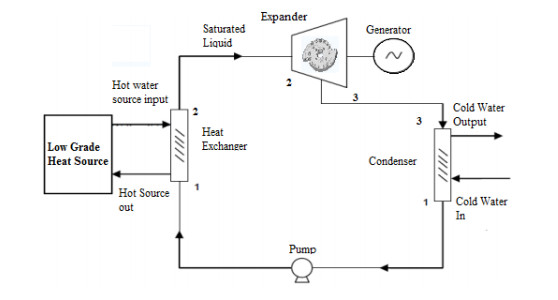









 DownLoad:
DownLoad:
